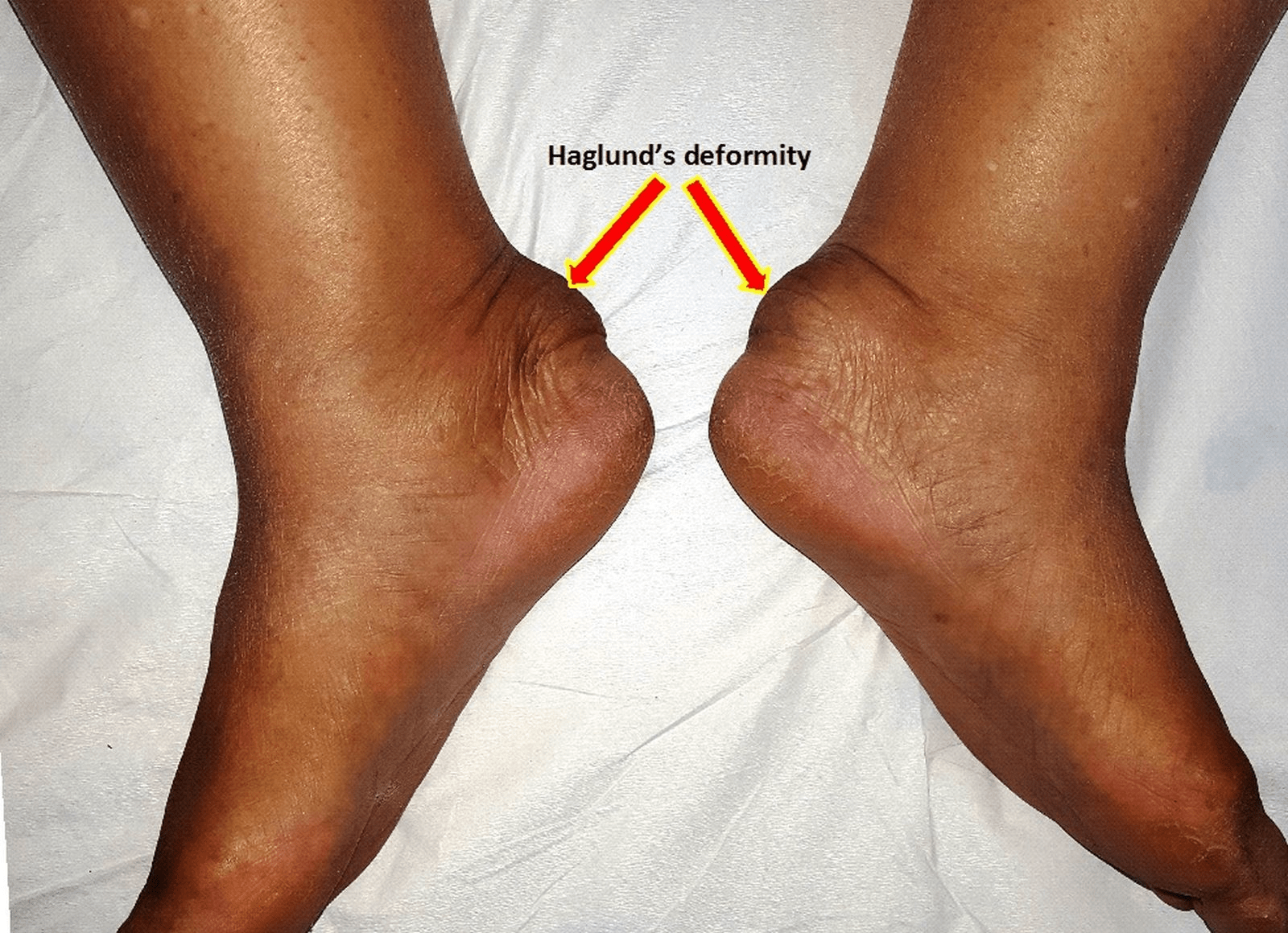About Haglund's Deformity
Haglund’s deformity is an abnormality which affects the heel bone and the surrounding soft tissues. It is characterised by an enlarged bony section on the heel, close to the location of the Achilles tendon, causing the soft tissue of the heel to become irritated and inflamed. This problem can often lead to bursitis (the irritation of the sac containing lubricating fluid which is located between the bone and the tendon). Bursitis can cause inflammation of the heel which makes the ‘bump’ larger, increasing the severity of Haglund’s deformity.
Causes
Haglund’s deformity is something people are born with. It doesn’t always cause a problem but the syndrome of pain and swelling has been seen to develop more frequently in people who have a high foot arch, runners or those who have a tight Achilles tendon.
Symptoms
Haglund’s syndrome is a condition which can develop in one or both feet. Symptoms can include a bony ‘bump’ which is situated at the back of the heel; pain where the heel attaches to the Achilles tendon; redness where there is inflamed tissue; and swelling of the bursa.

Diagnosis
While in some cases Haglund’s deformity can be diagnosed from the appearance of the heel, it is sometimes hard to diagnose, as several of the symptoms are also present in other foot problems. Tests such as an x-ray and/or MRI can assist the doctor in determining whether the disease is present due to the prominence of the heel bone.
Treatment
Once Haglund’s deformity has been diagnosed, non-surgical treatment options can serve to ease the pressure on the heel bone and relieve pain. These treatments include nonsteroidal anti-inflammatory drugs (NSAIDs) such as aspirin or ibuprofen; switching to wear open-back shoes; daily ice treatment; soft tissue massage; ultrasound treatments; wearing shoes with a raised heel; orthotics, which are shoe inserts that have been customised to stabilise the feet; and heel pads which can reduce the pressure from the shoes.
In cases where non-invasive treatments have not worked, surgery can be an option. Procedures are typically focused on removing excess bone from the heel, and also the filing and smoothing of the bone and removing. This can achieve the reduction of pressure on the Achilles tendon and bursa. Often this can be done endoscopically (minimally invasive / keyhole surgery) under a light general anaesthesic. Stitches are usually removed within two weeks and gradual resumption of normal activity to tolerance can commence. As with any foot & ankle surgery, swelling can persist for some months longer and is a normal part of the recovery.










